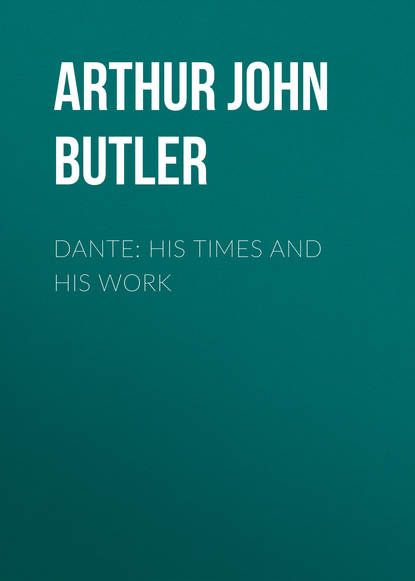По всем вопросам обращайтесь на: info@litportal.ru
(©) 2003-2024.
✖
Dante: His Times and His Work
Настройки чтения
Размер шрифта
Высота строк
Поля
It seems never to have been noticed that, as every line from the surface to the centre is perpendicular, a descent by slopes, such as is represented, would really be impossible.
32
See p. 34 (#FNanchor_17_17).
33
A late legend, to which some eminent writers have given too easy credence, does actually assert that Dante did go to Genoa, in the suite of Henry VII., about the end of 1311, and there was ill-used by some of Branca d’Oria’s friends or domestics. But none of the early commentators knows anything of this tale.
34
But see p. 42 (#Page_42).
35
See pp. 48–51 (#Page_48).
36
See p. 38 (#pgepubid00008).
37
See p. 70 (#Page_70).
38
Note that cupidigia is, in Dante’s scheme, the vice opposed to giustizia, that which debases nations as righteousness exalts them.
39
See also p. 46 (#Page_46).
40
This may be a good point at which to say that we need not suppose because Dante employed the Canzoni as pegs upon which to hang the philosophical, astronomical, and other lucubrations of the Convito, that when originally written they were anything but exercises in the amatory style of composition usual in that age, whether inspired or not by any serious passion. He would have found no more difficulty in attaching subsequently a mystical and moral interpretation to them than divines had found in doing the same for the Canticles.
41
In the case of the Commedia, it would seem that Dante himself took measures to guard against interpolations. As is well known, he never uses any one series of rhymes more than once in the same canto; and, from the structure of the terza rima, it is impossible to introduce any fresh matter when the canto is once completed without violating this rule. This fact alone serves to convict of forgery the unknown person who inserted eighteen lines after Hell, xxxiii. 90, in one of the Bodleian manuscripts; as to which, see Dr. Moore’s Textual Criticism.
42
It is, perhaps, worth noting that as the tendency to concetti increased in Italian literature, Dante was more and more neglected. Only three editions appeared from 1596 to 1716. Curiously enough, there are two treatises extant which just correspond with the beginning and end of this period of eclipse. One of them is called A Brief and Ingenious Discourse against the Work of Dante. It was written by Monsignor Alessandro Cariero, and published at Padua in 1582. The arguments are of the feeblest and most pedantic kind; but it marks a stage in taste. The recovery is indicated by a Defence of Dante Alighieri, a lecture given by Dr. Giuseppe Bianchini to the Florentine Academy in 1715, and published three years later.
43
See p. 102 (#Page_102).
44
“Primus in orbe Deos fecit timor” (Statius, Thebaid, iii. 661).





